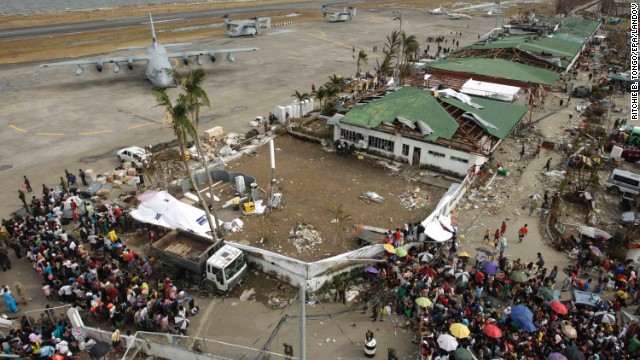
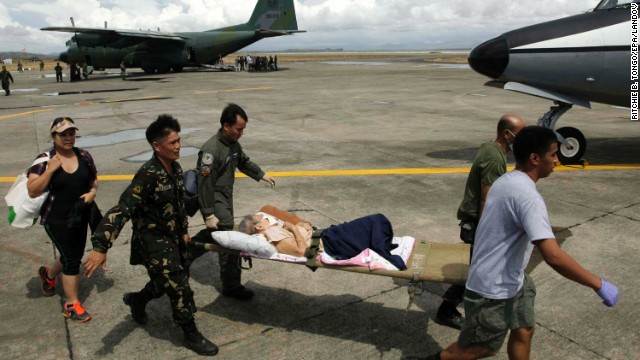

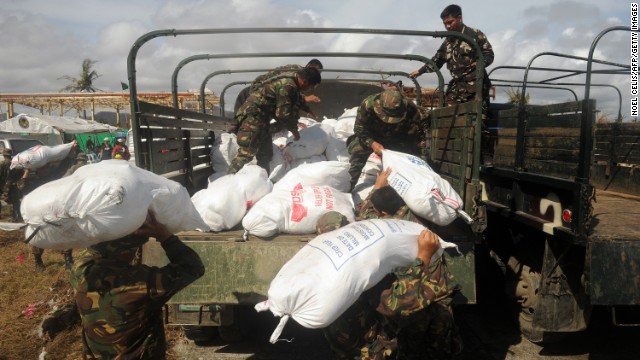
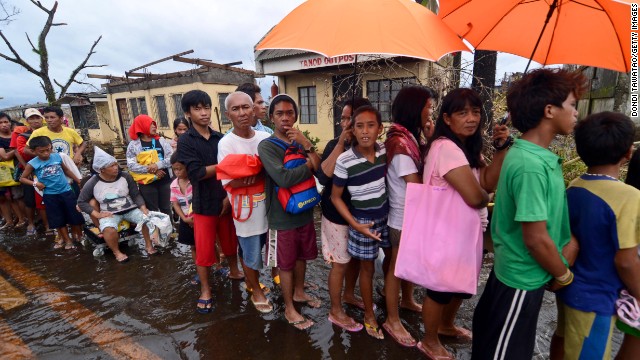
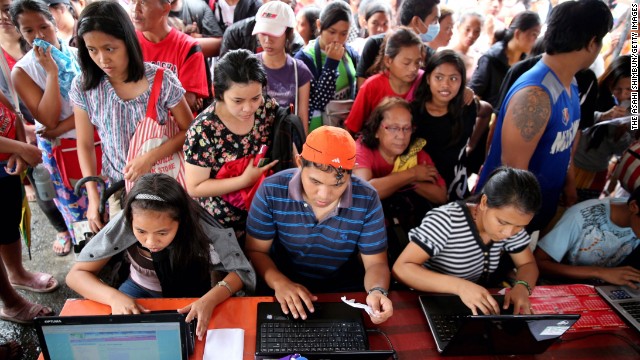



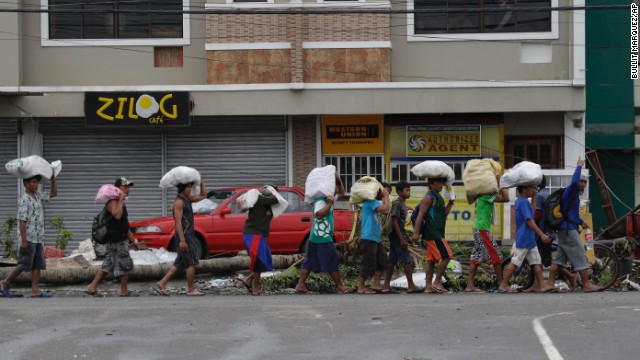
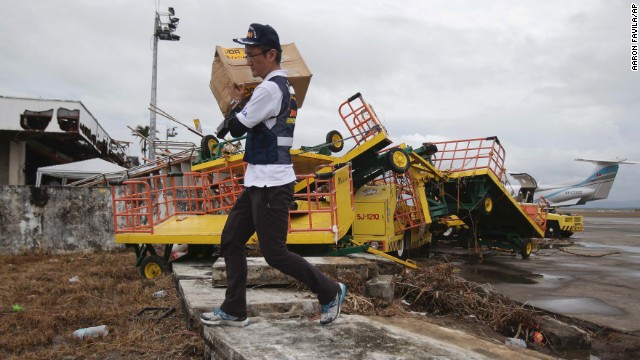

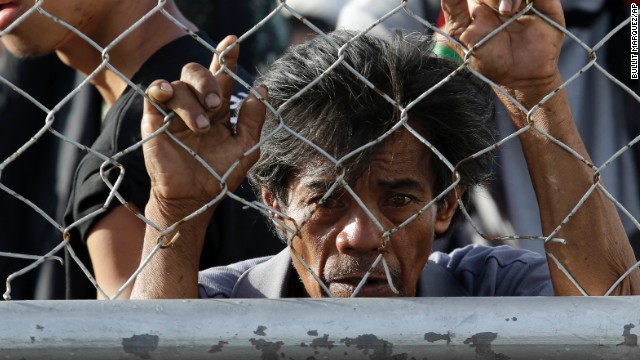

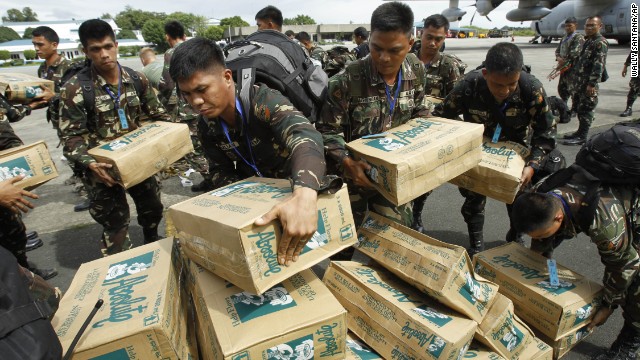
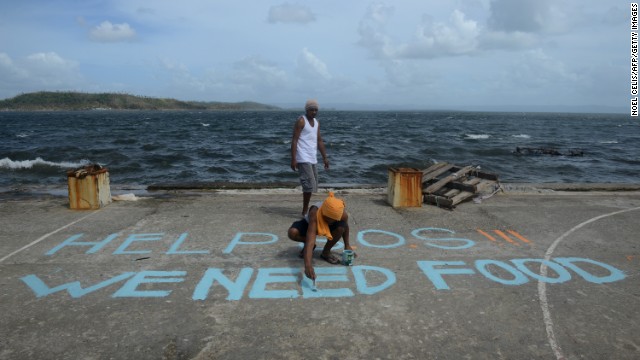

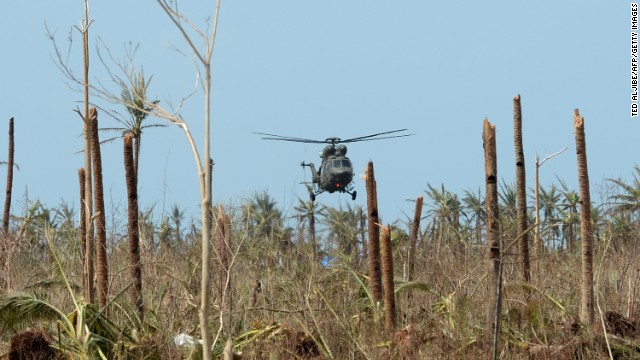
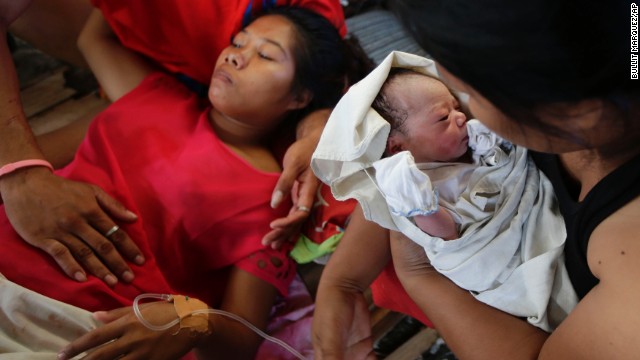
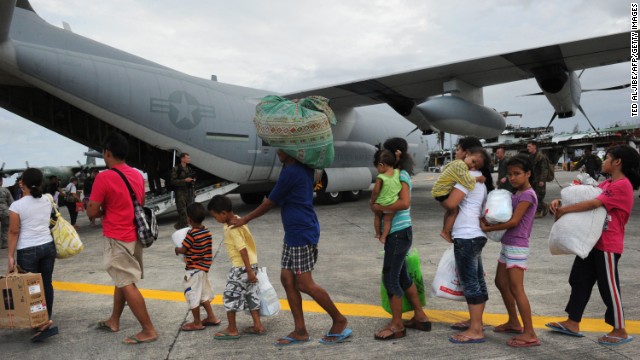
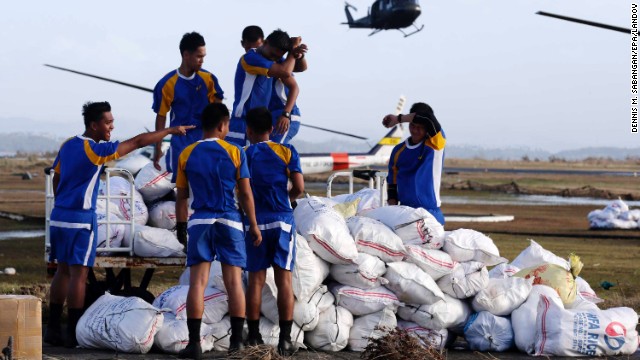




1

2

3

4

5

6

7

8

9

10

11

12

13

14

15

16

17

18

19

20

21

22

23

24
- Crews removing debris are uncovering more bodies, as death toll climbs to 3,621
- Women flee with children while some men remain to rebuild
- "My children are decomposing," one woman says
- Children wander about in the streets of Tacloban
Tacloban, Philippines (CNN) -- The official death toll in the Philippines in the wake Typhoon Haiyan rose to 3,621 Friday, according to national disaster agency spokesman Eduardo del Rosario.
The previous toll stood at 3,850 injured and at least 77 people reported missing after the storm that ripped up a group of the nation's islands with winds more than three times stronger than those of Hurricane Katrina.
The fright-filled scramble to survive the storm's furry, to keep heads above the wall of ocean waves it drove, has faded away with Typhoon Haiyan's winds.
But now, a week later, sickness, hunger and thirst have settled in with the sticky, humid heat and stench of rancid flesh hanging over the apocalypse the cyclone left behind.
Traumatized survivors under improvised shelters watch over bodies of husbands, wives and children who perished and are rotting in the sun.
More bodies keep emerging from under the rubble, as the cadaver collectors' cohorts in debris-removal crews uncover them while they heave away wreckage from the roads.
Juvelyn Taniega tried to keep busy. She collected old dishes and cleaned them up, crouching on the ground near the spot where her home once stood and the place where she last saw her husband and six children alive.
She's found the bodies of three of her children, but three of them are still missing. In days, she said, no one has come to help.
"My children are decomposing," she said.
There are many like her, looking in disbelief over fields miles long of crushed wood and stone that once stood as houses, wondering if her missing loved ones are buried in them.
But the bodies that Haiyan had flung everywhere are becoming a scarcer sight, as cadaver crews pull up in trucks to collect them for mass burial in nameless graves.
Officially, 801 bodies have been counted in Tacloban by Friday morning, but thousands are feared dead here.
Whole neighborhoods were swept out to sea.
Wandering children
In Tacloban, children have stayed children in spite of the wretchedness around them left behind when one of the strongest storms on record roared over the Philippines a week ago.
They wandered the streets Friday, satisfying their curiosity. Parents were often nowhere in sight -- if they are even still alive.
Children are most vulnerable, UNICEF spokesman Kent Page told CNN's Anderson Cooper. It's hard to keep them safe, and to give them so much that they desperately need.
"Health, nutrition, getting them clean water, good sanitation, protection, and we have to consider education also," Kent says.
"Schools have been wiped out and getting kids into child friendly spaces, where they can feel protected, where they can get a chance to play, where they can get a sense of normalcy back in their life after going through such a devastating experience is very important."
Many families are getting their children out of town. Their mothers are evacuating them, while their fathers are staying behind to sort through the remains of their destroyed lives, Tacloban's mayor Alfred Romualdez said.
He advises other families to follow their example.
As many mouths as possible should be fed elsewhere, where there is more food and water, and children need to be in safety.
Turning a corner?
Major streets have freed up in Tacloban, once home to 220,000 people, but the hum of delivery trucks ferrying out aid is conspicuously missing. The fields of rubble have become a ghost town.
Many of the city's haggard survivors have concentrated at the airport.
A line of people eager to catch a flight out of the tragedy snaked around it.
As naval ships pushed up on beaches like gray whales and drop their loading bay gates, people carrying over their shoulders whatever possessions they could rescue, strode into the bellies of the arks taking them to safer ground.
At the convention center, the hungry stood for hours in the sun in long lines awaiting the next load of food and bottled water landing in bulk pallets from around the world.
Some are there, because they have nowhere else to go.
"We really don't know what we're going to do next," said 30-year-old May May Gula, whose family a sharies what was left of a room on the convention center's ground floor with eight more families.
Reaching all the victims and assisting the survivors -- including more than 2 million people in need of food, according to the Philippines government -- are both priorities now.
Romualdez feels like his town is turning its first corner towards recovery. The mayor compares Tacloban to boxer who was knocked out.
After lying on the mat for a long time, it is just now coming to and trying to get back on its feet.
The relief efforts took a lunge forward Thursday, when the USS George Washington, an aircraft carrier teeming with 5,500 crew, pulled into Philippine waters.
It's accompanied by eight more ships that, together, have 80 aircraft, including 21 helicopters that can deliver supplies to inland villages where roads have been obliterated and eyeball pockets of people in despair from above.
Endless debris keeps them locked in with their misery and slows down aid from reaching them.
Irony of fate
Some typically called upon to help need help themselves.
Ryan Cardenas has helped with recovery efforts in the Philippine Navy after two cyclones in the past two years that left hundreds dead.
But when Haiyan slammed into the Tacloban naval station where he's based, he and other sailors clung to rafters in their barracks.
Their commanding officer, who was in a separate building almost demolished by the storm, stayed alive by clutching a palm tree's trunk.
Afterward, sailors helped retrieve some bodies, according to Cardenas. One found his mother sitting dead against a wall.
Now, they're sorting through the wreckage of the naval station and awaiting orders.
"This is the worst," Cardenas said, taking a break from fixing a piece of damaged furniture. "We're both victims and rescuers."
Concerns of violence
There have been reports of the threat of violence by groups looking to steal relief aid, but the U.S. military has said that violent crime is less of a problem than the debris blocking roads to those who need aid the most.
A Philippines senator said she's learned of reports of rapes and other crimes against women, some allegedly perpetrated by convicts who escaped prison in the typhoon's aftermath, the state-run Philippines News Agency reported.
Sen. Nancy Binay particularly expressed alarm after women said on TV that the situation had become worse, with assailants going so far as to break into people's homes.
Someone to live for
Jericho, a boy whose mother, aunt and nine cousins were killed in the storm in Tacloban, tells his father he wants to leave the city on one of the planes he's seen flying overhead.
His father tells him they have to stay.
"We have no money," he says. "Just each other."
Another man whose wife and child died said he can't stop thinking of seeing his family drown in the storm.
"The first one that I saw was my youngest," he said. "She fainted, and then she drowned. The water was so fast. And then my wife, when I tried to grab her, I missed her. Then she drowned, and then I never saw her again."
Over the past week, he admits he's often thought of killing himself.
But he hasn't, he said, because he still has one child who needs him.
CNN's Jethro Mullen reported from Tacloban; Ben Brumfield wrote and reported from Atlanta. CNN's Anna Coren contributed from Cebu; Greg Botelho and Catherine Shoichet contributed from Atlanta.
